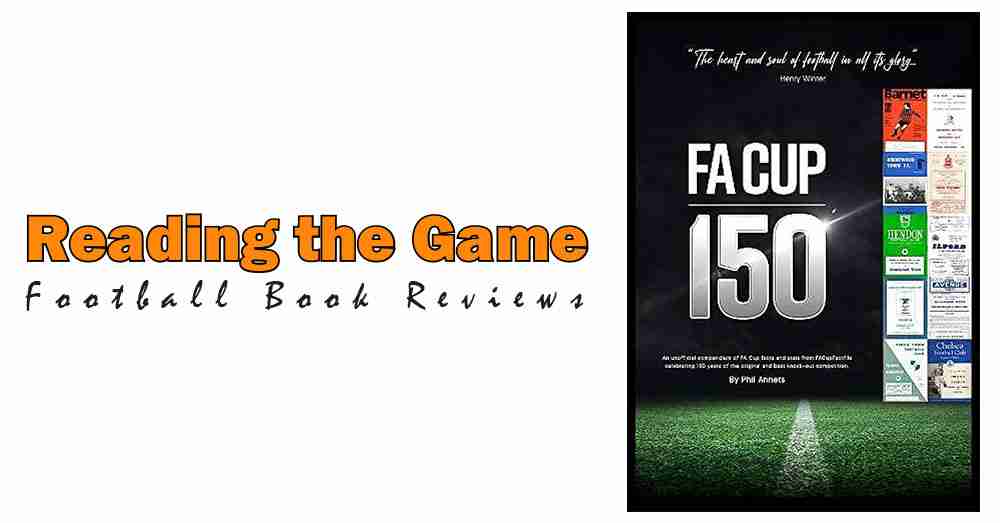For my latest Reading The Game, I’ve tried to be topical. I’ve published this blog on the weekend of the First Qualifying Round of The FA Cup which, despite its name, is actually the third stage of the competition. The book I’m looking at is FA Cup 150, by Phil Annets.
If you’re a regular listener to The Non-League Football Show, or active on Twitter, you might already have come across Phil’s work. His Twitter account, @FACupFactfile, has almost 18,000 followers and is a constant source of information and inspiration for fans of the famous old tournament.
This season is the 150th since the creation of The Football Association Challenge Cup, so FA Cup 150 aims to be a reference work, specifically marking the anniversary. Reference works – particularly list-based books – can be dry and unengaging, but FA Cup 150 manages to avoid falling into that trap by shining a light on aspects of the Cup’s history that an official publication might not. One chapter I particularly enjoyed was called “150 years of disqualifications”.
Of course, the book covers the ‘set pieces’ that any work of this kind must if it wishes to be credible; the Finals and the bigger clubs get the recognition their achievements demand. But what makes this book a genuine page-turner is that it shines a light on the many-layered qualifying competition, which whittles more than 600 clubs down to 32, in a way that an FA-produced work, or a book from one of the major publishing houses simply wouldn’t. FA Cup 150 will tell you what some of the weird acronyms some non-League clubs have in their names mean. It covers unique events which occurred during the tournament’s history and records every club participating in this season’s Cup, plus when they first took part.
This book is a passion project. That comes through right from the beginning of the book and that passion helps to make this book work. When Phil Annets switches from lists to prose, such as in the section where he discusses the challenges of compiling statistics which treat the evolution of the competition fairly, there’s an energy to the words which comes from a deep-rooted love for The FA Cup and a justifiable pride in the database that underpins each and every list.
Now, I know full well that I’m a massive nerd who is passionate about non-League football and its history, which places me squarely in this book’s target market. But I’ve accumulated stats books and histories of clubs and competitions over the years which left me cold. FA Cup 150 had the opposite effect; I enjoyed reading it from cover-to-cover and now that I’ve done so, it will be a book that remains in my collection for years to come, to be dipped into as and when the mood takes me, or I have a column to write which calls for FA Cup facts… particularly those which are a little out of the ordinary.
FA Cup 150 is a terrific book. As a record of the brilliant randomness of the competition, it is unsurpassed. As a statistical record of a century and a half of competition, it is a solid, impeccably researched resource. I think pretty much any fan of English football – from the Premier League right down to the Step 6 Leagues gradually being squeezed out of the Cup – would learn something from it and enjoy themselves while doing so. I certainly did!
You can buy FA Cup 150 direct from the author by visiting The FA Cup Factfile shop. As regular readers will know, I also like to mention Stanchion Books when I can; they also have signed copies available, alongside a wealth of other football titles.
